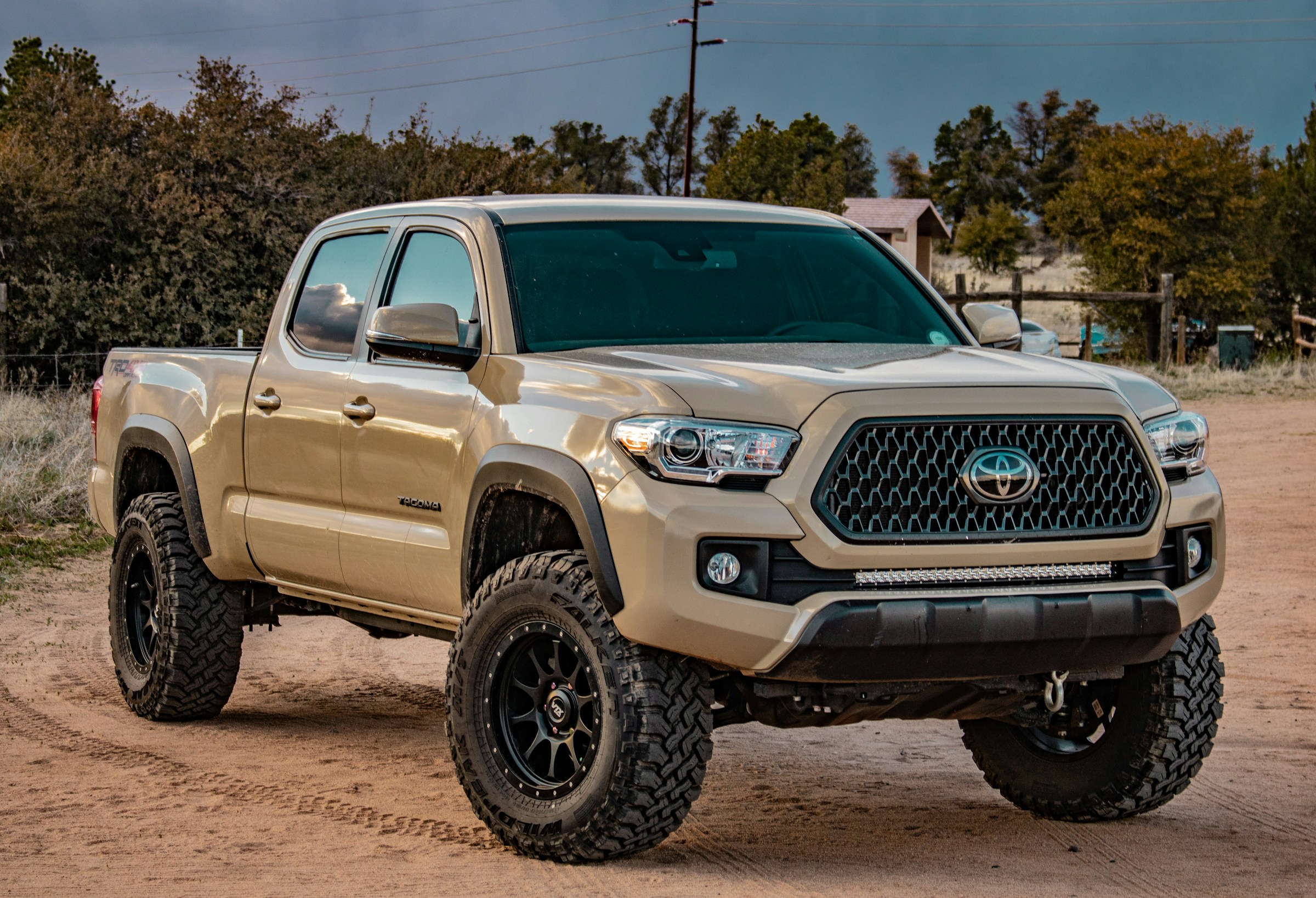Understanding Rear Differential Gear Ratios
When discussing a vehicle’s towing capacity, many consider the engine’s horsepower, but rear differential gear ratios play an equally crucial role. These ratios refer to the relationship between the pinion gear and the ring gear within the differential. Essentially, they determine how many times the driveshaft must rotate to turn the wheels once. This impacts torque and power delivery, which are vital for hauling heavy loads.
A Toyota Tacoma, known for its reliable towing capacity, benefits from specific gear ratios tailored to enhance its performance. Here’s why: lower gear ratios (higher numerically) can provide more torque, useful when extra power is needed to pull heavy trailers. Conversely, higher gear ratios (lower numerically) can improve fuel efficiency but might not offer the same towing strength.
This might interest you : Mastering Tesla Model S Air Suspension: Expert Tips for Enhanced Comfort and Superior Handling
Stock gear ratios are generally set for balanced performance across various scenarios. However, for those looking to push their Tacoma’s towing capacity further, modified gear ratios can be considered. Modification allows drivers to optimize for weight-specific tasks, ensuring their vehicle delivers peak torque when it’s most needed. Understanding these differences will help you make informed decisions about enhancing your vehicle’s towing capabilities.
Assessing Your Toyota Tacoma’s Current Towing Capacity
Evaluating the Toyota Tacoma’s towing capacity begins with understanding the factory specifications. The towing capacity depends on the model year and specific configuration of your truck. For instance, the factory differential setup greatly influences this capacity, creating both opportunities and potential limitations. Typical setups include a choice between two-wheel drive and four-wheel drive, with the latter generally being more suited for heavier towing tasks due to its superior traction capabilities.
In the same genre : Mastering Tesla Model S Air Suspension: Expert Tips for Enhanced Comfort and Superior Handling
To accurately assess your Tacoma’s current setup, examine key specifications. This includes the engine type, which can range from a fuel-efficient 2.7L four-cylinder to a more robust 3.5L V6, impacting towing potential. Additionally, transmission options (manual vs. automatic) and the presence of any tow package modifications are crucial factors.
It’s also important to identify your vehicle’s configuration to align with your towing needs. This involves understanding its Gross Vehicle Weight Rating (GVWR) and Gross Combined Weight Rating (GCWR), which dictate maximum weight allowances for safe towing. Different setups cater to varying performance needs; thus, ensuring that your Tacoma’s current configuration aligns with your specific towing requirements is imperative for optimal performance and safety.
Selecting the Right Gear Ratio for Your Needs
When it comes to selecting gear ratio, focusing on towing needs first can simplify the decision-making process. Different towing requirements significantly impact which gear ratio will best serve your needs.
Factors to Consider
When determining the proper gear ratio, several factors are crucial. The weight of the load you intend to tow is a primary concern. Heavier loads typically demand lower gear ratios to maintain engine efficiency and vehicle stability. Similarly, the terrain you expect to encounter—whether flat, hilly, or mountainous—can also dictate the optimal ratio. Lastly, your vehicle’s engine type and power output are key parameters that influence the ideal gear ratio for both towing needs and performance enhancement.
Recommendations and Trade-Offs
Based on differing towing needs, optimal gear ratio recommendations can vary. For example, a 3.73 ratio may serve general-purpose towing well, offering a balance between power and fuel efficiency. For heavier loads, a lower ratio like 4.10 is preferable. However, each gear ratio comes with trade-offs—lower ratios promise greater torque but may impede performance enhancement and fuel economy. Thus, balancing these elements with your specific needs ensures effective selecting gear ratio tailored to enhance both towing efficacy and overall performance.
Step-by-Step Guide to Modifying the Rear Differential Gear Ratio
Embarking on the journey of modifying your rear differential can be a rewarding process. Here’s a focused approach to handle this intricate task.
Necessary Tools and Materials
When planning your installation, having the right tools is paramount. Essential items include:
- Wrench set: different sizes for various fasteners.
- Torque wrench: for accurate tightening.
- Pry bars and hammers: to ease component removal.
- High-quality lubricant: for the new gear set.
- Safety gear: like gloves and goggles.
You’ll also need a gear oil pump to add oil to the differential after installation.
Preparation and Planning
Proper preparation ensures a smooth installation process. Start by parking the vehicle on a flat surface and using a hydraulic jack to lift it safely. Secure it with jack stands to ensure stability. Clear your workspace to prevent mishaps and organize your tools for easy access. Planning involves understanding the existing gear ratio to decide on the new one for better performance.
Installation Steps
Begin by removing the differential cover and draining the old oil. Carefully remove existing gears with a wrench. Clean the housing thoroughly before fixing the new gear set. Use the torque wrench to secure everything, referring to torque specifications for precision. Finally, replace the differential cover and refit other components, ensuring all connections are tight and safe. Add new gear oil and test the vehicle to confirm the modification.
Costs Involved in Changing the Gear Ratio
Changing the gear ratio of a vehicle can seem daunting, especially when considering the cost of modification. The process isn’t just about the parts; it’s also about labour and expertise. The first major expense to consider is the parts themselves, which can vary greatly depending on the make and model of your vehicle. This initial investment sets the groundwork for your budget.
Budget for installation also plays a significant role. You have two primary options: DIY or hiring a professional. While a DIY approach might save money upfront, it requires the right tools and knowledge to avoid further expenses down the road. Professional installation provides peace of mind, ensuring accuracy and expertise, albeit at a higher price point.
Factors such as vehicle type, region, and the professional’s experience can notably influence the total price. Hidden fees might arise, such as the need for additional parts or unexpected labor costs, which can swell the cost of modification beyond initial expectations. To avoid surprises, be diligent in obtaining comprehensive quotes and ensuring all necessary costs align with your financial plan to avoid a surprising budget overrun.
Safety and Maintenance Considerations
When embarking on any modification, safety in modification is paramount. It is crucial to adhere to strict safety protocols to prevent accidents and damage. Wearing protective gear, ensuring the vehicle is securely lifted, and having a second person present can significantly enhance safety during the process. Always ensure to use tools and equipment that are properly maintained and appropriate for each task.
Once the modification, such as altering the gear ratio, is completed, regular checks become vital for maintaining optimal performance. Post-modification, inspect the modification site to identify any potential issues early. Regular checks should include monitoring fluid levels and listening for unusual noises, as they may signal problems.
A critical aspect of maintenance is addressing gear ratio maintenance. By routinely inspecting the rear differential, you can spot issues before they escalate. Indicators of potential problems might include unusual vibrations, harsh noises when cornering, or irregular tire wear. Such signs suggest it might be time to reconsider the modifications or conduct corrective maintenance.
By maintaining a vigilant approach to both safety and regular maintenance, you can ensure that your modified vehicle remains both safe and efficient on the road.
Performance Benefits of Perfecting Your Gear Ratio
Enhancing your gear ratio can lead to significant improvements in performance, particularly for those who frequently engage in towing. Adjusting the gear ratio optimally results in quantifiable performance gains, making your vehicle more capable in demanding situations. Those who modify their gear ratio often report substantial improvements in towing performance.
Customer Testimonials
Many satisfied users have shared their experiences, offering valuable insights through customer testimonials. For instance, modifications to the gear ratios on Tacomas have led to noticeable differences in how effortlessly they manage towing tasks. The capability to handle heavier loads with ease is a common theme in these anecdotes, proving the efficacy of gear ratio adjustments.
Performance Metrics
Before undertaking modifications, many owners document their initial vehicle performance metrics. Post-modification, the comparative data frequently shows marked improvements. Enhanced towing performance and overall vehicle responsiveness are typical outcomes. These enhancements illustrate the practical benefits of a well-calibrated gear ratio.
Adjustments like these not only boost performance but also enhance the user experience, granting drivers more confidence in challenging conditions. Whether through improved towing capacity or smoother driving dynamics, perfecting your gear ratio can profoundly alter your vehicle’s handling and capabilities for the better.







